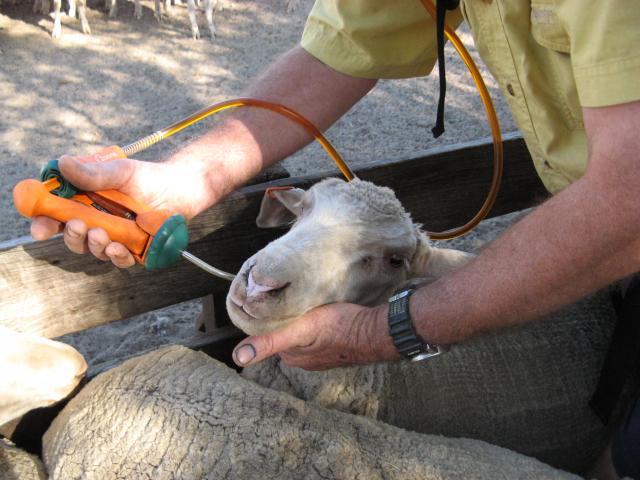High scour worm burdens reported this spring

Investigations into deaths, illthrift and scouring in ewes and lambs this spring have shown some have very high scour worm burdens.
Recent worm egg counts from ewes and lambs also identified some mobs with unexpectedly high levels of scour worms – this includes black scour worm, brown stomach worm and, to a lesser extent, the thin-necked intestinal worm and large mouthed bowel worm.
Affected flocks were located throughout the medium and high rainfall agricultural zones.
This worm alert is important as there is usually no need to drench ewes when lambs are weaned.
However, the long period of low Feed-On-Offer (FOO) availability over winter has not only led to heavily worm contaminated pastures but has also delayed the improvement in condition of ewes and the accompanying increase in their immunity to worms.
With the expectation of adequate spring nutrition worm immunity in sheep should return, however some mobs of ewes in poorer condition than normal may require an effective drench at weaning to help them through.
Treat your lambs
Given the seasonal conditions it is now imperative that lambs are weaned by 14 weeks after the start of lambing to reduce deaths and illthrift this spring.
Lambs need an effective treatment at weaning and then go onto a lower worm burden paddock.
Lambs have no immunity to worms and a worm egg count four weeks after weaning is essential to detect if scour worms will reduce their growth rates over spring.
Check effectiveness of drenches
To check if a drench is effective collect 20 dung samples when the mob is drenched for faecal worm egg counts, then again 14 days later from the paddock.
There is no need to yard the weaned lambs for the second sampling for this drench-check, however, a full drench resistance test on lambs kept back at weaning is the best way to test how effective several drench types are against the brown stomach worm at the same time.
This drench resistance testing will require advice from a worm egg count provider.
Protect against flystrike
As the weather warms up, regular monitoring of flocks is required as sheep with diarrhoea are at risk of fly strike.
Producers could consider crutching and/or using a long acting preventative fly treatment, which can offer between three and five months of protection.
Producers are reminded to be aware of chemical with-holding periods when attending to fly strike and to use the department’s revamped free Flystrike Assist app to manage and record treatment applications.
For more information go to “Sheep worms - testing for drench resistance and effectiveness” or “Sheep worm control in Western Australia” or Worm Boss.
